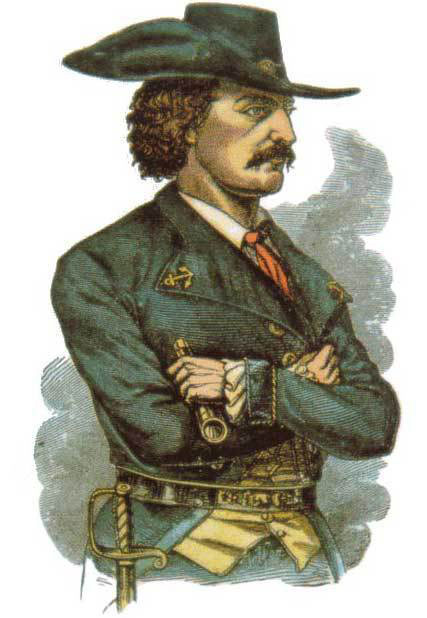
Mystery surrounds the life of Jean Lafitte. Lafitte always denied he was had committed the crimes of which he was accused. But he did admit to smuggling because of the unjust laws of the United States which forced him into it.

Not much is known of Lafitte’s early life, but it is known that he was raised by his grandmother. Lafitte wrote in his journal: “I owe all of my ingenuity to the great intuition of my Jewish-Spanish grandmother, who was a witness at the time of the Inquisition. My mother died before I can remember and my maternal grandmother, who lived with us, became a mother to me… My grandmother was a Spanish-Israelite… My mother’s father had been an alchemist with a good practice and patronage in Spain. He was a freethinking Jew with neither Catholic faith nor traditional adherence to the Jewish synagogue. But this did not prevent him from dying of starvation in prison for refusing to divulge the technical details which the Inquisition demanded of all Jews. Grandmother told me repeatedly of the trials and tribulations her ancestors had endured at the time of the Spanish Inquisition… Grandmother‘s teachings… inspired in me a hatred of the Spanish crown and all the persecutions for which it was responsible.”
It is known that around 1809 Laffite was working with his brother Pierre near New Orleans, they ran a blacksmith shop that was also a center where smugglers could sell the loot they obtained from privateers. Included in this booty were all sorts of linens, chinaware, metal pots and other household good as well as slaves. The venture led to the establishment of Laffite’s colony on Barataria Bay south of New Orleans. Lafitte had letters of marque from the republic of Cartagena. He used the letters of marque, which are licenses given to privateers to attack the enemy of the grantor on the high seas. In this case, it was a license to attack Spanish shipping, an enemy of Cartagena (now Columbia). It was a perfect way for Laffite and others in his group to punish Spain for the many injustices committed by the Spanish Inquisition. However, the U.S. Government did not recognize Cartagena and therefore considered Laffite a pirate rather than a privateer with a license to attack ships from Spain. It should be noted that the spelling of the name Laffite is often represented as Lafitte or Lafitt.
One account of Laffite by Pam LeBlanc writing in Texas Highways Magazine relates; “Historians believe Lafitte was born in France, or possibly the Caribbean Island of Hispaniola, around 1790. He spelled his name Laffite, but English documents switched the spelling to Lafitte, and it stuck. He began his criminal career in New Orleans around 1805 when he worked with Pierre to peddle stolen goods. Though he is remembered as a pirate, he was late to the game; the golden age of piracy had fizzled a century earlier under pressure from the British navy. Lafitte acted more like a mob boss than a sword-wielding swashbuckler, even though paintings sometimes depict him wearing a plumed hat (he probably didn’t). From 1817-20, Lafitte headquartered his smuggling business on Galveston Island, which was then part of Spanish Texas. He and his older brother, Pierre, patrolled the Gulf of Mexico as pseudo-agents of New World governments that had revolted against Spain, exploiting the naval routes that linked the Gulf Coast to the rest of the globe.”
During the War of 1812, the British became aware of how difficult it would be to attack New Orleans and how experienced Laffite was in navigating the hundreds of miles of hidden channels through the bayou and his experience as a Captain. The Royal Navy offered Laffite $30,000 and a Captaincy in the Royal Navy if he would guide them through an attack on New Orleans. While Lafitte pretended to accept the deal, he warned Louisiana officials of the planned attack on New Orleans. The New Orleans Governor W.C.C. Claiborne did not believe Lafitte and requested the U.S. Army and the Navy to attack and destroy Lafitte’s colony at Barataria. Several of Lafitte’s ships were destroyed and many of his crews were captured. Despite the attack, Lafitte was still able to continue his smuggling business. Lafitte met with Andrew Jackson and offered to help with his men if they were all granted a full Pardon. General Andrew Jackson was charged with defending New Orleans. He had only a small number of troops and a very limited supply of gun powder and ammunition. During the ensuing Battle of New Orleans, Laffite fought with distinction. Jackson is known to have praised Lafitte as “one of the ablest of men.” In February of 1815, President James Madison offered pardons to the Barbarians for any crimes committed against the United States. There are still some descendants still living in the New Orleans area.
In the Cecil B. DeMille film “The Buccaneer”, Yul Brenner with a full head of hair plays Lafitte, Charles Boyer plays his second in command and Charleston Heston, with more than a full head of hair plays General Andrew Jackson. In the film version, a romance develops between the governor’s daughter played Claire Bloom. In the film, one of Laffite’s renegade captains sinks a ship on which the sister of Laffite’s love interest, the Governor’s other daughter is traveling back to Britain. Only a cabin boy survives to tell the tale. Once his story is told, Lafitte declares his love for the Governor’s daughter but says he could never ask her to marry the man whose men killed her sister despite the fact that he was not aware of the attack until it was over. The Technicolor film is available to rent on Amazon Prime.
In 1817, after the war, Laffite organized a commune called Campeche on what is now the city of Galveston in Texas. In 1819 he served as governor. His hatred for the Spanish still very much alive, he and his men numbering over 1000, grew restless.
It is believed that after his heroic efforts with General Jackson, Laffite returned to his life of piracy. He and his crews were attacking U.S. ships in 1820. Then suddenly, perhaps yielding to increased efforts to capture him, Laffite burned the town and sailed off in one of his favorite ships The Pride where it is believed he continued his piracy for several years along the coast of Spanish America.
There are several accounts of what he did after the Battle of New Orleans. One of the more believable was published in The Journal of Jean Laffite: Its History and Controversy by Robert L. Schaadt the author quotes Mirabeau B. Lamar who recorded the entry in 1855, as information received from James Campbell. “Campbell, who thought the year to be either 1821 or 1822. Campbell, a colleague of Laffite’s, swore that in 1836 William Cochran, Laffite’s first lieutenant, had told him: Laffite sailed to the Southard and made the Cape Cartouche, dividing the Honduras and Mexico, met a large ship and made up to her for action. She had 14 guns and made a severe fight; Lafitte was badly wounded in the action and lost several men. He captured her; and after holding her twenty-four hours the supercargo ransomed her for one hundred thousand dollars, her cargo being estimated by the invoices at three times that sum. Cochran being first Lt., Lafitt put him in command of the captured vessel as prize-master. Lafitt and Cochran now ran to Vera Cruz [sic] and ran off on waiting for the ransom, which was to be paid in twenty-four hours . . . and a severe wound inflicted on Lafitte himself . . . Lafitt beat up to Venezuela, where he died of his wounds.”
There is a National Park named for Jean Lafitte. The state of Louisiana authorized the site of the Barataria community to be declared a state Park in 1966. In 1978 Congress created the Jean Laffite National Historical Park and Preserve. (https://www.nps.gov/jela/index.htm).
Patriot or pirate, the legend of Jean Laffite is a part of the history and mystique of southern Louisiana. He prowled the high seas and the sweltering bayous and backwaters in search of treasure.
